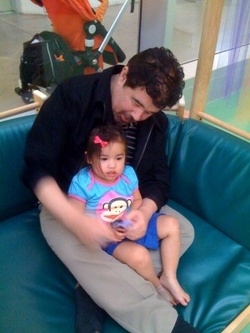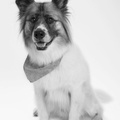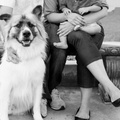Lane Ryo Hirabayashi is professor in the Asian American Studies Department, and affiliate of the Asian American Studies Center at UCLA, where he is also the inaugural “George & Sakaye Aratani Chair in Japanese American Internment, Redress, and Community.”
Lane earned an M.A. (1976) and then a Ph.D. (1981) in Socio-cultural Anthropology from the University of California, Berkeley. Subsequently, he held a post-doctoral fellowship at the UCLA’s Asian American Studies Center in 1981-82. Lane is author of over thirty scholarly articles, as well as author/editor of nine books and anthologies, including Japanese American Resettlement Through the Lens: Carl Iwasaki and the WRA’s Photo Section, 1943-1945.
The UCLA Asian American Studies Center was established during the 1969-1970 academic year as a result of faculty, student, alumni, and community advocacy. “The Center,” the founding steering committee wrote in its proposal to the UCLA administration in 1969, “will hopefully enrich the experience of the entire university by contributing to an understanding of the long neglected history, rich cultural heritage, and present position of Asian Americans in our society.”
What is the mission statement of your life?
Change it up, in the sense of I’d like to keep growing as a thinker and a person. Be as good as I can to my family and friends. Do what I can in the fields of Asian American and Ethnic Studies, since this is the main vehicle that I’ve used to make a contribution to society. In AAS what I mainly do is research and writing, and then I teach on that basis.
How did you end up doing what you’re doing?
It’s been a path with twists and turns. I started out with a strong interest in music, particularly American folk and blues. By the time I was in high school, it was a passion. Since the draft was on, though, I started to become politicized via the anti-war movement. In ’68 my dad, Jim, went out on strike at San Francisco state. As a result, at 17, I started to hang around J-Town and Chinatown in SF, and all that really changed me. Specifically, I began to see myself as a bi-racial person who identified largely with my JA and AA sides. My old friend Stephen Murphy-Shigematsu has been reminding me of late about what that personal shift was all about: Check out his article.
After spending a summer in Brazil in 1972, I applied and got into the Ph.D. program in Anthropology at UC Berkeley in 1974. In that capacity, I did two full years of fieldwork in Mexico, ’77-79, and carried out a detailed ethnography of Zapotec Indians from Oaxaca who had migrated to the capital.
When I returned to Berkeley in 1979 Prof. Ron Takaki hired me to TA for his Intro to Asian American history class. Ron was an outstanding teacher, and when I finished my doctorate at Cal in 1981, Ron encouraged me to pursue my interest in Ethnic Studies. Under his guidance I applied for the post-doc fellowship at UCLA’s Asian American Studies Center. Ever since, I have always taught in either Asian American Studies or Ethnic Studies.
If Hollywood made a movie about your life, whom would you like to see play the lead role as you?
Definitely Ryun Yu, the star of Jeanne Sakata’s play, Dawn’s Light. Ryun did an excellent job capturing my uncle Gordon as a young man. He’d have to put on some weight, though, if he wants to look like me.
How can people find out more about your organization or get involved?
They can have a look at the web sites of UCLA’s Asian American Studies Department and Center: www.asianam.ucla.edu and www.aasc.ucla.edu.
Both have their own special missions, and I actually belong to both. It’s a huge honor, in the sense that so many talented, committed, productive people have ties to the Center and the Department. It’s actually a weighty responsibility, too, and can seem a bit overwhelming at times, but I do the best I can.
If you had a crystal ball, what do you see for the future of the Asian/Pacific Islander American community?
I really hope the communities, individually and collectively, would be thriving well into the future. Certainly the Internet and social networking sites have put a new spin on what’s happening and what can happen, so it’s not just a matter of local neighborhoods anymore. The Internet and social networking are instantaneous, pervasive, and global. (Just look at the racist rant on YouTube by the former UCLA student last month. That garnered over 4 million hits in just a couple of weeks!)
For myself, it’s partly a matter of keeping the ethnic ties and roots, even as there are periods in my life when I’ve done things that didn’t necessarily have to do with to being part-JA or AA. I guess you could say that I always wanted it all, so I’d like to see A/PIs have access to community, but also be able to sample whatever else they want to in life.
Bonus Question: What advice do you have for young professionals? Would you give different advice for young Asian Pacific Islander American professionals?
One spends so much time at work, and if you pursue higher education, you spend a great deal of time getting your degrees and preparing to work. Most importantly: do something you enjoy and believe in. And something that will contribute to future generations. To the API folks, in particular, I’d say: take your time but find ways to give back to your family, friends, and community. Many people sacrificed to help put us, API professionals, where we are today, and we should never forget that.
Bonus Question: What are your comfort foods and what memories do you have associated with them?
Ha, ha, that’s a funny question. When I was a teenager, my dad would sometimes ask me “Are you hungry?” He and my mom had split up by that point, so I’d go over to his place on the weekends. On occasion my dad would take the time to make me his custom ramen soup. It was basically just “instant noodles” right out of the package, but he’d throw away the soup package and start heating up some dashi. Then he’d slice and fry up some lob cheung. Next was some kamaboko to add to the broth when the time was right. He’d wash and diagonally slice some green scallions to go with it. So I don’t remember my dad saying “I love you” straight up. I don’t think Nisei dads do that. But I remember him handing me that steaming bowl of delectable noodles. When I got older I eventually came to understand Jim’s ramen as a serious token of how he felt about me, and I’ve never forgotten those special meals.
Bonus Question: What’s your guilty pleasure?
TV. Definitely TV. My mom, who was a librarian, refused to have a TV in the house until I was 17 or so. I felt kind of deprived, but my parents had a huge collection of books and they were all over the house. I was free to help myself, and so I read all kinds of things, anything I wanted. In Cold Blood. To Kill A Mocking Bird. Snow Country. Fanny Hill. And this was when I was 13, 14, right? If she could see me now, Mom would kill me. I have 3 TVs at home and they’re on all the time, even when I go to sleep.
* This article was originally published on 8Asians.com on May 19, 2011.
© 2011 Koji Steven Sakai







